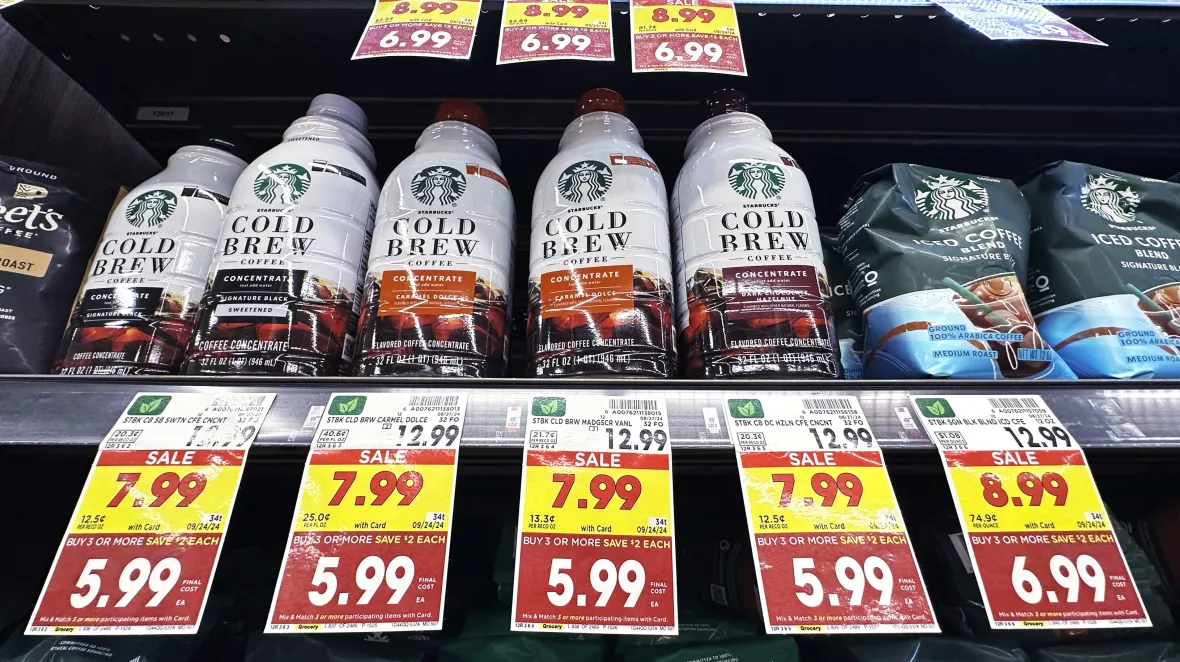US inflation rose slightly last month after 2 years of steady cooling but remained low

Economists think inflation will eventually resume its slowdown, but Donald Trump’s victory has raised uncertainty about where inflation might be headed.
WASHINGTON (AP) — Inflation in the United States ticked up in October, driven by costlier rents, used cars and air fares, a sign that price increases might be leveling off after having slowed in September to their lowest pace since 2021.
Consumer prices rose 2.6% from a year earlier, the Labor Department said Wednesday, up from 2.4% in September. It was the first rise in annual inflation in seven months. From September to October, prices edged up 0.2%, the same as the previous month.
Excluding volatile food and energy costs, “core” prices rose 3.3% from a year earlier, the same as in September. From September to October, core prices rose 0.3% for a third straight month. Over the long run, core inflation at that pace would exceed the Federal Reserve’s 2% target.
Most of the monthly increase in consumer prices reflected an increase in rents and housing costs, a trend that Fed officials expect to fade in the coming months. As a result, Wednesday’s figures could keep the Fed on track to cut its key rate for a third time in December, as its officials have previously indicated they likely would.
Most economists think inflation will eventually resume its slowdown. Consumer inflation, which peaked at 9.1% in 2022, has since fallen steadily, though overall prices are still about 20% higher than they were three years ago.
The price spike soured Americans on the economy and on the Biden-Harris administration’s economic stewardship and contributed to Vice President Kamala Harris’ loss in last week’s presidential election.
Yet Donald Trump’s victory has raised uncertainty about where inflation might be headed and how the Fed would react if it reaccelerated. Trump has vowed to reduce inflation, mostly by ramping up oil and gas drilling. But mainstream economists have warned that some of his proposals, notably his plan to substantially increase tariffs on imports and pursue mass deportations of migrants, would worsen inflation if fully implemented.
Stock prices surged in the wake of Trump’s election victory, mostly on optimism that his proposed tax cuts and deregulation would boost the economy and corporate profits. But bond yields also moved higher, partly reflecting fear that inflation could accelerate.
In addition, the economy is growing faster than many economists had expected earlier this year. It has expanded at nearly a 3% annual rate over the past six months, with consumers, particularly those with higher incomes, spending freely and fueling growth.
Gas prices fell 0.9% from September to October, helping to hold down overall inflation. Prices at the pump have since fallen further on average nationwide, to 3.08 a gallon on Wednesday, according to AAA. That’s down from $3.20 a month ago.
Grocery prices ticked up just 0.1% from September to October and are up just 1.1% over the past year, providing some relief to consumers after food costs surged roughly 23% over the past three years. Egg prices continue to be highly volatile. They fell 6.4% just last month, though they’re up more than 30% from a year earlier.
Used car prices jumped 2.7% just from September to October, after having mostly declined for months before that. Auto dealers have mostly rebuilt their inventories after they were depleted during COVID and in some cases have had to offer incentives again to entice buyers. Compared with a year ago, average used car prices are down 3.4%.
At a news conference last week, Fed Chair Jerome Powell expressed confidence that inflation is still heading down to the central bank’s 2% target, though perhaps slowly and unevenly.
Powell also noted that most sources of price pressures are cooling, suggesting that inflation isn’t likely to accelerate in the coming months. Wages are still growing and have outpaced prices for the past year and a half. But Powell noted that wages aren’t rising quickly enough to boost inflation.
A survey released Tuesday by the Federal Reserve Bank of New York found that consumers expect prices to rise just 2.9% in the next 12 months, which would be the lowest such measure in nearly four years. Lower inflation expectations are important because when consumers expect milder price increases, they’re less likely to act in ways that raise inflation, such as accelerating their purchases or demanding higher pay to offset higher prices.
Another potential source of relief for Americans’ budgets is in apartment rents. They are now barely rising on average nationwide, according to the real estate brokerage Redfin. Its measure of median rent was just 0.2% higher than it was a year ago in October, at $1,619, though that figure reflects rents only for new leases.
The government’s measurement of rents is rising faster because it includes existing rents. Many landlords are still raising monthly payments to reflect higher costs for new leases over the past three years.
More must-reads:

